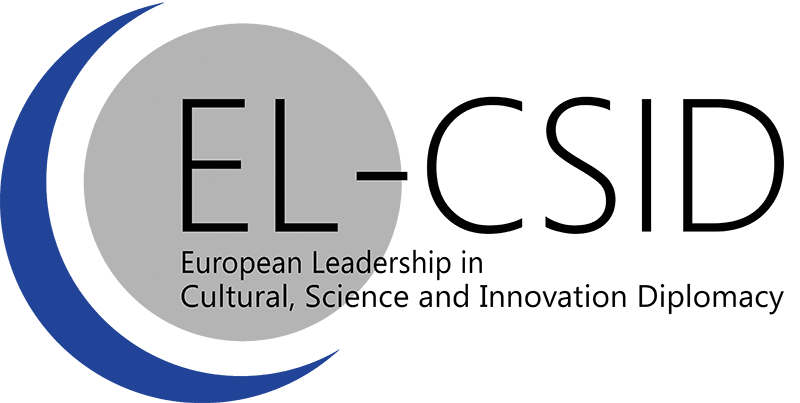Towards a Global Science Diplomacy activity?
- Luk Van Langenhove
- 25 nov 2016
- 4 minuten om te lezen

The recent trend to step up scientific diplomacy activities in different parts of the world is an interesting one to monitor. It poses the following question: for what purposes will states and scientists work together? States have their own reasons, namely the pursuit of their self-interests. But scientists are bringing other issues on the table and this might be changing the practices of science diplomacy. Perhaps the most salient development for the future of Science Diplomacy is indeed the growing awareness of global problems that sovereign states are faced with. Not only are they all of a planetary nature; they also are all connected to scientific and technological issues, both for monitoring them and for finding solutions to them. Almost all of today’s pressing global problems such as climate change or energy security have a scientific component. Hence the need to link global governance with scientific evidence, which is exactly what Agenda 2030 foresees. For the sustainable development goals to be reached, different actors need to do their part: governments, the private sector, civil society as well as the scientific communities. Science Diplomacy might therefore just be the tool we need to realise these goals.
One can say that the UN and the S&T community have already embarked upon an increased involvement of S&T in global policy making. But the result is an increasingly complex global governance structure in which scientists and policy-makers can interact. These interactions are not without problems as both states and the scientific communities have their own interests and speak a different language. Bringing S&T to the global policy realm is therefore not a simple endeavour and in order to be effective, it needs to be further professionalised and developed as a practice.
This can be done through moving science diplomacy away from the soft power rhetoric and self-interests of states towards the global level where it can be used as tool to achieve better global governance. Inspired by the triple approach to Science Diplomacy at the national level, one can therefore see three areas where such a Global Science Diplomacy effort can be further developed.
The first area is that is that of Science in Global Diplomacy. As the bulk of the S&T community is for obvious reasons primarily interested in doing research, and not necessarily in undertaking diplomatic actions, the issue is how to bring all relevant issues to the right places. While not all scientists need to engage in science diplomacy directly, there should at least be a general understanding amongst all of them on the mechanisms of science advice at the global level. And for those scientists who do act as science diplomats, awareness and capacity is needed on the processes of interacting with the diplomats and policy-makers.
A second area is that of Diplomacy for Global Science. Here, we are talking about diplomatic actions at the level of multilateral organisations aimed at facilitating S&T collaborations in the context of dealing with global problems. At the multilateral level, this mainly involves the opening-up of the policy realms to S&T advice. States could to do the same, but meanwhile they also have to open up their national funding schemes to fund the research needed. Furthermore, the diplomats and policy-makers at both the state and multilateral level need more awareness and capacity on how to engage with the S&T community.
A third area can be labelled Global Science for Global Diplomacy. The S&T community is not only organised in disciplinary and epistemic communities but also in advocacy networks. These organisations are at the nexus of global science-policy interactions and need funding for the support structures for delivering S&T advice at the global level. Contributing to supporting not only the relevant research but also the much-needed international organisations for partnering with the multilateral system can be seen as a major responsibility of states.
Together, these three areas can be regarded as the building blocks of a Global Science Diplomacy agenda. Further developing such an agenda could be a joint effort of S&T organisations, such as ICSU or ISSC, S&T funding agencies and global organisations. The stakes are high given that dealing with global problems such as climate change is a major challenge for humanity.
Obviously, this does not mean that we can expect that scientists will save the world, neither that states will (or even should) hand over their sovereign powers to scientists. But the multilateral policy-makers need the S&T input very much to understand the problems and challenges, to draft effective policies, to monitor what is happening and to develop innovative solutions. This implies not only that scientists and diplomats need to step up their interactions in the context of a Multilateral Mode 2.0 environment. It also means that states, regions, NGOs as well as the S&T community all need to take actions to further their advance their dialogue and collaboration. Developing a Global Science Diplomacy agenda should therefore be a priority for all those concerned about the sustainable future of the planet and its present and future inhabitants. A first step towards such a Global Science Diplomacy initiative could be the drafting of a strategic document that outlines a vision on how S&T could be best integrated in the tackling of global challenges. Such a vision could then be operationalised in tools that deal with both the complexities of formulating often disputed scientific advice and the complexities of global policy-making. The big question then is: who is willing and capable to take the lead in such an initiative? Perhaps the answer is: a coalition of S&T organisations, major funding agencies and multilateral organisations. After all, global challenges deserve global solutions…
For a further developed version of this argument, please consult the paper titled "Global Science Diplomacy as a new tool for Global Governance".

























Opmerkingen